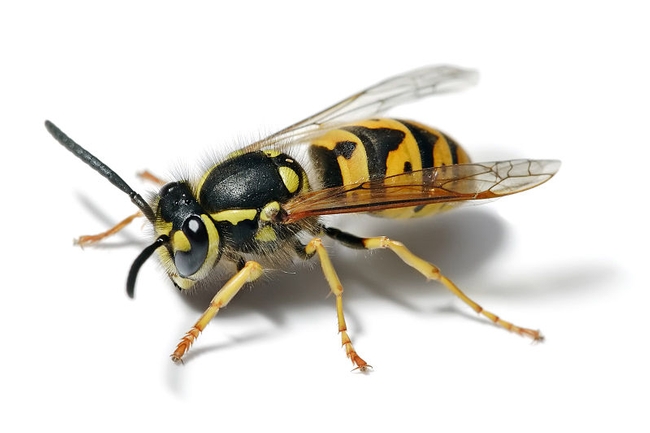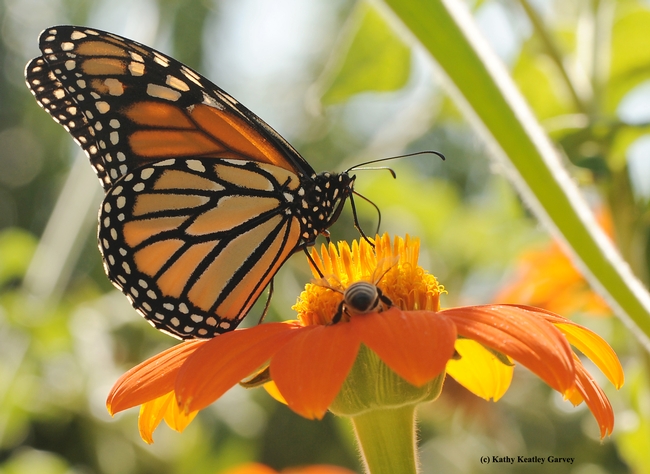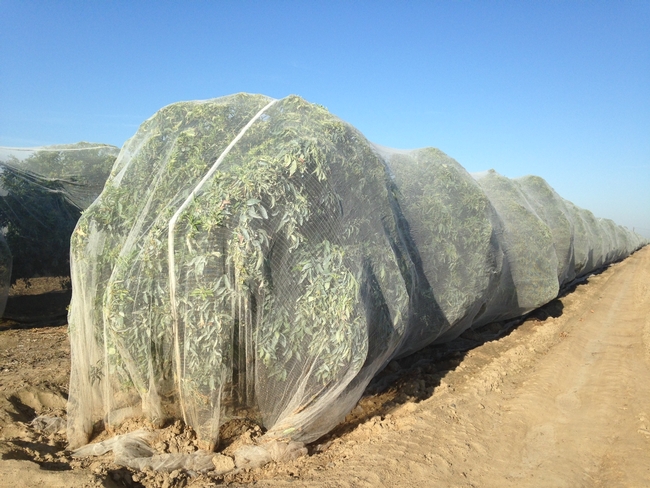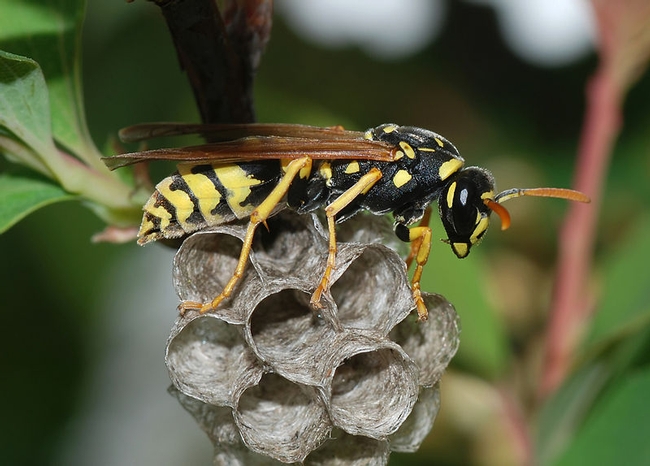Posts Tagged: wasps
To bee or not to bee depends on the crop
Bees do it. Birds do it. Even bats do it. They all help plants reproduce by carrying pollen from one flower to another. Beetles, butterflies, wasps, flies and moths are also pollinators.
About 35 percent of the food we eat depends on the assistance of bees to pollinate plants and trees so they will produce fruit, nuts or vegetables. It takes 1.6 million colonies of honey bees to pollinate California's 800,000 acres of almond trees.
Our food choices would be dramatically reduced if bees weren't around to pollinate. To illustrate what the produce section of a grocery store would look like in a world without bees, Whole Foods Market removed the products that depend on pollination from one of its stores and took a photo. See the difference: http://ucanr.tumblr.com/post/84164840510/kqedscience-whole-foods-shows-customers-the. Without bees, more than half the fruits and vegetables were eliminated.
Honey bees and other pollinators are being threatened by the drought, disease, mites, loss of habitat and food sources, according to Eric Mussen, UC Cooperative Extension specialist in the Department of Entomology at UC Davis and bee expert.
But not everyone wants help from pollinators. To produce seedless fruit, some citrus growers cover their mandarin trees to keep out bees because the mandarins, or tangerines, produce seeds if the tree is pollinated. Most consumers prefer their mandarins to be seedless.
Beth Grafton-Cardwell, UC Cooperative Extension specialist in the Department of Entomology at UC Riverside and director of Lindcove Research and Extension Center, talks about the role of pollinators in California agriculture in this video: http://www.youtube.com/watch?v=8suOt5PnzWc&feature=youtu.be.
To see photos of different kinds of pollinators and to learn more about how to help them thrive, visit our pollinator page. On May 8, help count the pollinators in your community and add them to the map at http://beascientist.ucanr.edu.
Invasive paper wasp responsible for increasing yellow jacket complaints
The European paper wasp is spreading quickly across Northern California and boosting yellow jacket complaints, reported Peter Fimrite in the San Francisco Chronicle.
"The European paper wasp, which is about the same size (as the yellow jacket) but more slender, has built up to enormous numbers in some communities," said Lynn Kimsey, professor in the Department of Entomology at UC Davis. "They have been making their way out of the Sacramento area for the past 20 years."
Kimsey said the wasps have moved outward from Sacramento along river beds and water ways into the Sierra Nevada and along the delta toward San Francisco. In August, 345 wasp nests were removed in South Lake Tahoe.
European paper wasps dine on caterpillars, aphids and honeybees, but switch to mostly carbohydrates in the late summer for energy, said Andrew Sutherland, UC Cooperative Extension advisor in the Bay Area.
Vernard Lewis, UCCE specialist in the Department of Environmental Science, Policy and Management at UC Berkeley, also contributed to the story.
"Where I normally eat my lunch is one of the biggest yellow jacket nests I've seen in years," Lewis said. "It's not just here. I'm getting reports from the Berkeley campus and from Richmond, Antioch and Rodeo. Something is up. It's not just yellow jackets. It's other pests, too, like cockroaches. It's the most I've seen in at least 10 or 15 years."
Fimrite added a link in his article to the UC Statewide IPM Program Pest Note on Yellowjackets and other social wasps.

Yellow jackets, like the one above, are often confused with European paper wasps. (Photo: Wikimedia Commons)
2009 is a good year for wasps
An article in the Merced Sun-Star today declares that wasps are in full force this summer. Reporter Carol Reiter set out to determine why and what to do.
UCCE farm advisor Maxwell Norton told her he suspects the high number of local homes abandoned due to foreclosure has boosted the wasp population."So many abandoned homes means that they are multiplying unabated," Norton was quoted. "Garage eaves and home eaves give them a lot of places to build their nests and be undisturbed."
Reiter also spoke to Mary Louise Flint of the UC Integrated Pest Management Program. She said yellow jackets are aggressive and can pose problems for humans; paper wasps, on the other hand, won't usually sting unless they get trapped. Unfortunately, it's hard to tell the difference.
The UC IPM online guideline for "Yellowjackets and other social wasps" says some social wasps provide a great benefit by killing large numbers of plant-feeding insects and nuisance flies; others are exclusively scavengers. Wasps are only a problem when they threaten to sting.
The guideline provides information on preventing and trapping wasps, but the advice for spraying will probably discourage all but the most fearless homeowners from doing it themselves.
"Wasps will attack applicators when sensing a poison applied to their nests, and even the freeze-type products are not guaranteed to stop all wasps that come flying out," the guideline says.

UC Master Gardener wasp identification illustration.




